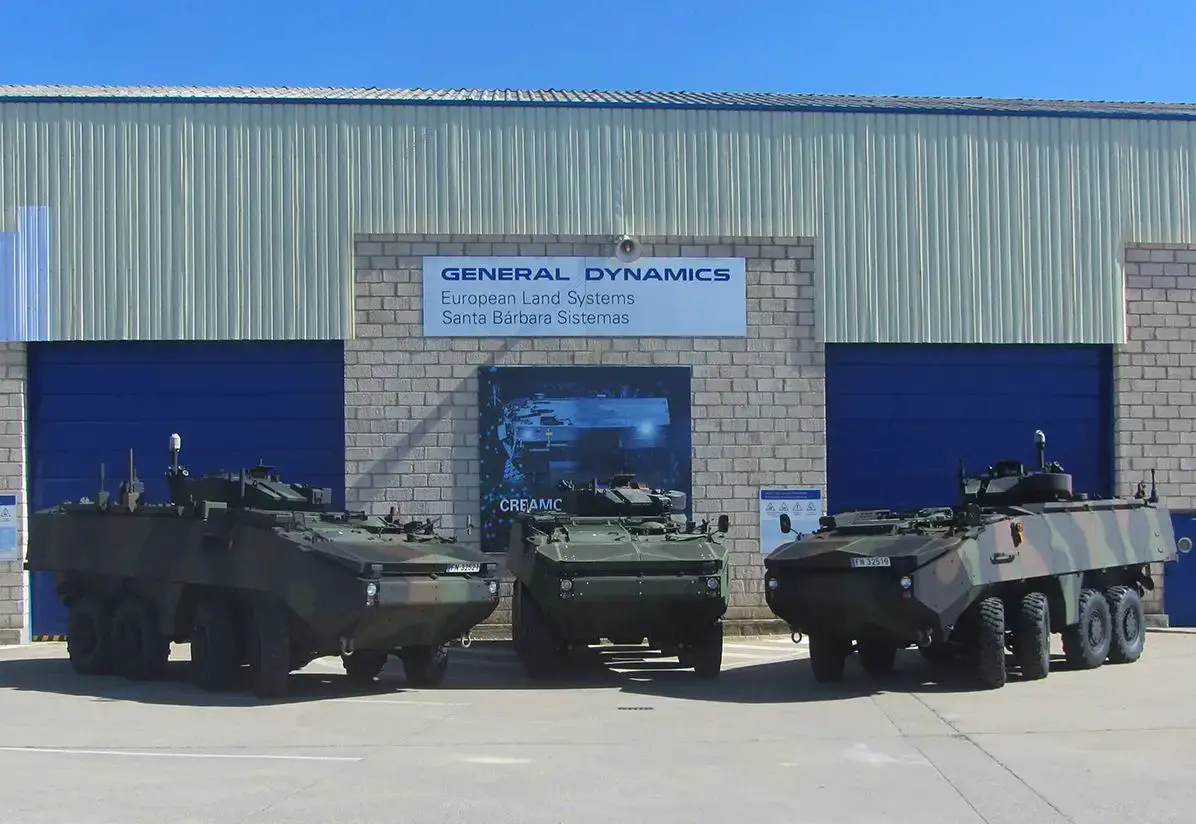On May 6, 2024, GDELS Santa Bárbara Sistemas delivered three upgraded Piranha IIIC armored vehicles to the Spanish Marine Corps as part of the F10 mid-life maintenance program. As Army Recognition reported this initiative is designed to extend the operational life and enhance the capabilities of the Piranha IIIC fleet. Under the framework agreement, a total of 21 vehicles are set to be refurbished and upgraded. The latest delivery follows five previously handed-over vehicles, marking significant progress in the program. The F10 mid-life maintenance program is a comprehensive refurbishment initiative aimed at ensuring the Piranha IIIC vehicles meet current and future military requirements. Key upgrades include enhancements to the driveline and protection systems, making the vehicles more effective against modern threats.
The program also focuses on improving overall performance, mobility, and crew comfort, ensuring the vehicles can operate efficiently in various combat environments. The refurbishment process involves disassembling each vehicle, repairing and optimizing all subsystems, repainting, and conducting final tests to meet strict military standards. Upon completion, the vehicles undergo official acceptance by a military inspection team. The latest delivery of the upgraded Piranha IIICs, driven from the GDELS factory in Alcalá de Guadaíra, Seville, to the TEAR military base in San Fernando, Cadiz, showcased their operational capability and readiness. GDELS Santa Bárbara Sistemas has expressed gratitude towards its staff for their dedication and professionalism and thanked the Spanish Navy for its ongoing trust in its capabilities and services.

The Piranha IIIC, designed by Swiss company Mowag (now GDELS-Mowag), is renowned for its mobility, protection, and versatility. Used by several countries including Belgium, Brazil, Ireland, Denmark, Sweden, and Spain, the vehicle features a remote weapon station capable of supporting armaments up to 12.7 mm in caliber. It has an operational weight of 14,000 kg, can reach speeds of 100 km/h on roads and 10 km/h in water, and has an operational range of 750 km. In terms of protection, the Piranha IIIC offers modular and scalable solutions against bullets, mines, improvised explosive devices (IEDs), and rocket-propelled grenades (RPGs), adhering to international standards. The vehicle is also equipped with nuclear, biological, and chemical (NBC) protection systems and fire suppression systems, as well as an autonomous recovery winch, enhancing its resilience and survivability on the battlefield.
GDELS also unveiled a more maneuverable Piranha variant last month designed for better cross-country mobility and trench-crossing. The Piranha Heavy Mission Carrier (HMC) is a new 10-wheel 40-ton variant in the line of armored fighting vehicles. The Piranha HMC is designed for superior cross-country mobility and trench-crossing. It is equipped with an all-wheel-power-driveline and a multi-link suspension system. The Piranha also has a reduced turning cycle of less than 18 meters (60 feet). It can take up to 17 tons of payload consisting of crewmembers, fuel, weapons, and ammunition. The HMC as a response to NATO and other international clients’ growing need for highly maneuverable wheeled armored vehicles in demanding missions.
















